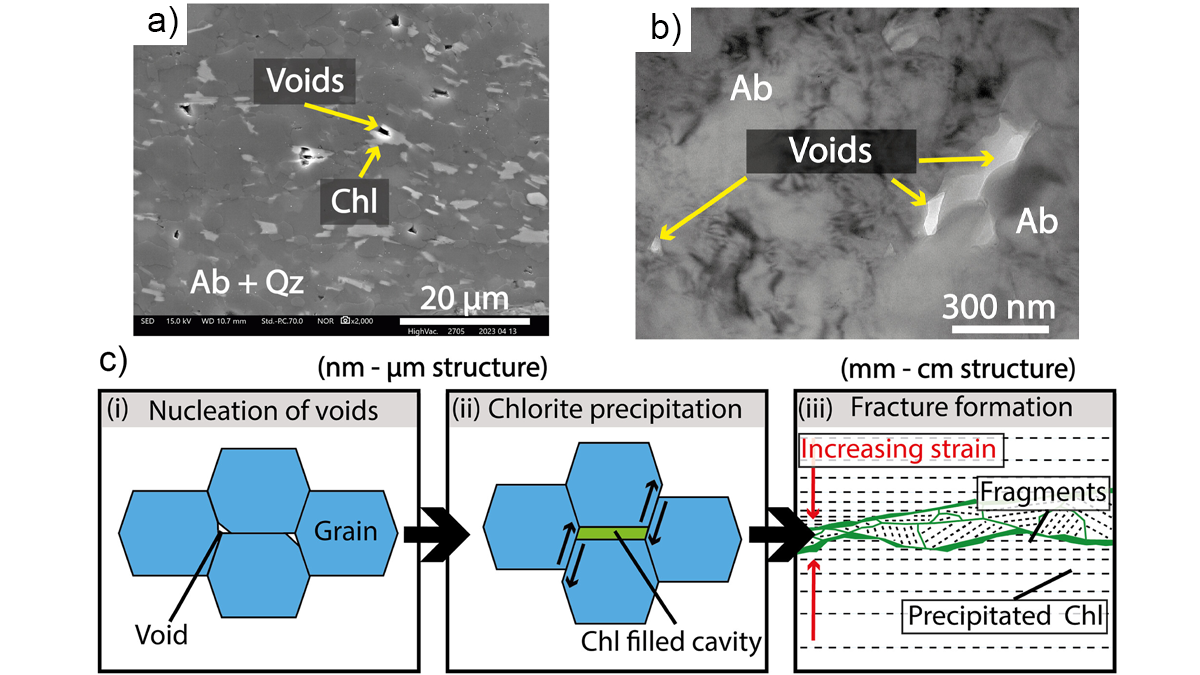Editors’ Highlights are summaries of recent papers by AGU’s journal editors.
Source: Journal of Geophysical Research: Solid Earth
Large earthquakes generally nucleate at the base of seismogenic crust, between 10 and 15 kilometers deep, where the interplay between brittle and plastic deformation is complex due to the combined effects of pressure and temperature at these depths. In consequence, how earthquake fractures may nucleate under these conditions remains relatively enigmatic.
Yeo et al. [2025] present evidence of the formation of nanocavities under these conditions from the geological rock record. The studied rocks are ultramylonites, i.e. rocks of ultrafine grainsize, brought back from an outcrop of the Median Tectonic Line, the largest on‐land fault (>1,000 kilometers along strike) of Japan. Ultramylonites generally deform via intracrystalline plasticity and grain boundary sliding. Yet, the ones presented by the authors have also kept records of the formation of nanoscale cavities, formed at the base of seismogenic zone. When the density of these cavities becomes critical, they may coalesce leading to the formation of a ductile fracture, a phenomenon well-known in metallurgy. The authors observe that these ductile fractures, generally filled with secondary hydrous minerals such as chlorite, were ubiquitous along the entire length of the ultramylonite exposure, spanning over 7 kilometers.
Ductile fractures, observed along one the world’s most active shear zone highlight the importance of fracturing due to ductile deformation in the source region of large earthquakes. In such way, nano-scale cavities generated 15 kilometers deep may well be the initial nucleation point of large continental earthquakes.
Citation: Yeo, T., Shigematsu, N., Wallis, S. R., Kobayashi, K., Zhang, C., & Ujiie, K. (2025). Evolution of nanocavities to ductile fractures in crustal-scale faults at the base of the seismogenic zone. Journal of Geophysical Research: Solid Earth, 130, e2024JB029868. https://doi.org/10.1029/2024JB029868
—Alexandre Schubnel, Editor-in-Chief, JGR: Solid Earth

